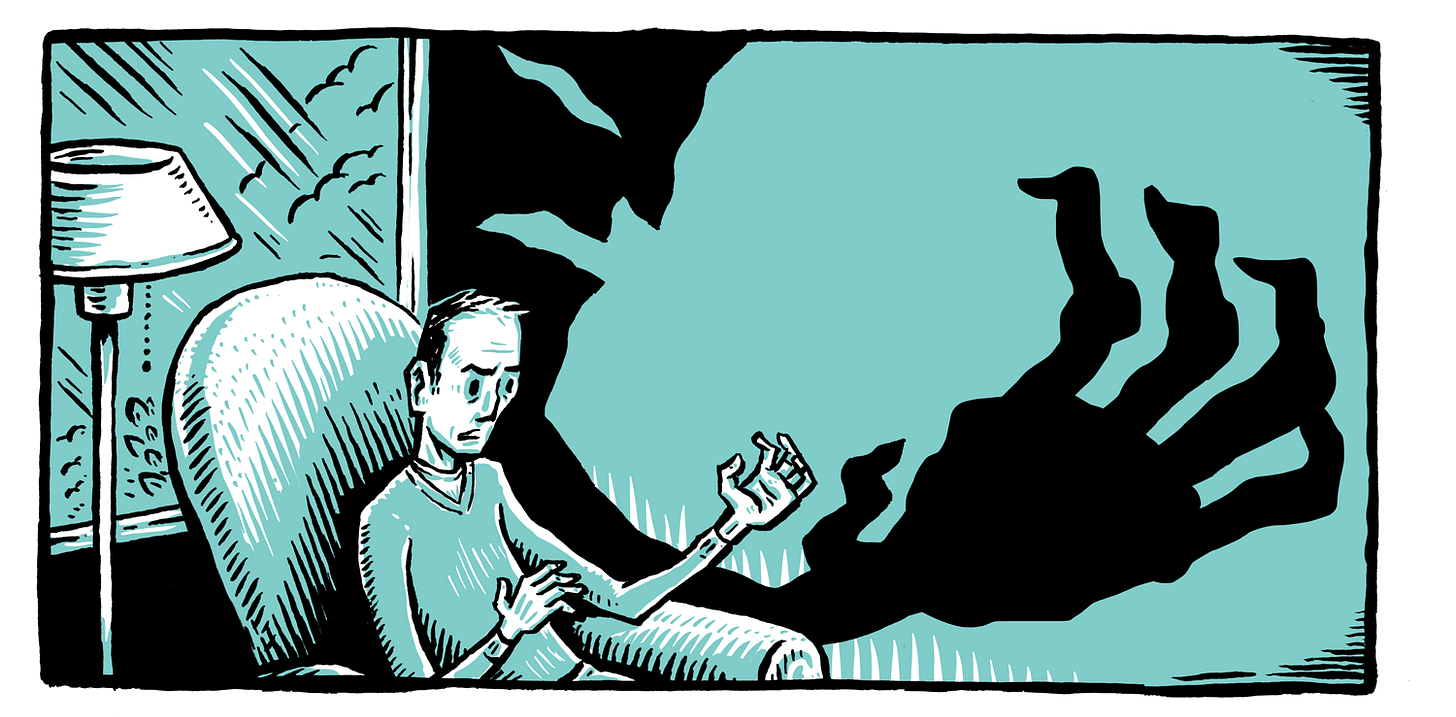Interview with Hugh D’Andrade
"I realized that comic literature was hard — almost too hard — but right at the sweet spot for me. It combines art, storytelling, and graphic communication, in a format that the public can embrace."
Describe your comics journey—how did you get into making comics?
I have been an illustrator for thirty years, doing editorial work for magazines, rock posters, YA books, and political art for nonprofits. But somehow, in all those years, I didn’t produce a graphic novel, despite being an avid comics reader for my whole life. Partly, the reason for this is my struggle with ADHD! The complexity of comic literature production can be quite difficult for someone with my brain type.
On the few occasions when I did do a short comic, I would find it rewarding, but very challenging. Just doing two pages seemed enormously complex! How would I ever do a whole book?
But during the pandemic, I did what many people were doing: I stayed home and wondered what I wanted to do with the rest of my life, assuming I was lucky enough to survive. I realized that comic literature was hard — almost too hard — but right at the sweet spot for me. It combines art, storytelling, and graphic communication, in a format that the public can embrace.
I found that I needed help on this journey, so I signed up for the MFA in comics program at the California College of the Arts. This book was my thesis project!
How did you develop your voice?
Since I had been doing art and illustration for so many years, coming up with a style seemed like the least of my worries. But in fact, I did struggle with this problem! It’s easy enough for me to draw a character, but how do you get that character moving through space, talking to people in a believable way? I had to jettison a lot of my standard habits and tools, and strip things down. In drawing comics, I found, it’s less important to make a page or a panel beautiful than to get it to communicate the meaning and the story. Meaning takes precedence over aesthetics, at least for me.
Advice to beginning comic artists: draw yourself, over and over and over. Learn to do it quickly, and let the mistakes happen. Perfectionism is the enemy of expression! Let it be flawed but true. Get your comic character moving around in the tiny universe of a paneled page, and eventually, your character will come alive! (It may not be “you” exactly — it might be a version of you, and that’s OK.)
Can you tell us a little about The Murder Next Door?
When I was ten years old, my next door neighbor was murdered. The victim's sons and I discovered the body. For many years, I avoided talking about the subject — partly because I was aware that I was not the primary victim. My close friends had lost their mother!
But while in therapy, I found that the subject was still a live wire in my brain. I began talking more about the memories, first with my therapist, but later with friends, family, and even strangers. And I learned two things: 1) it really helps to turn to face difficult memories, to examine them and see what patterns they may be creating in your life; and 2) you’re not alone in whatever traumas you may have experienced! Many, if not most people have some sort of trauma they have survived, and they too are probably going through life not discussing it much.
So, I wrote my book to try to share what I learned on this journey, and hopefully it will inspire others to engage in something similar.
What are some of challenges (and joys?) you encountered while working on The Murder Next Door?
I really struggled to find a way to work on a graphic novel! I know that many comic artists write a script, almost like a screenplay, that they then break into panels and illustrate. I found this method did not work for me! I had to sort of write and draw the pages as I went. This was more labor-intensive, and time-consuming, but I’m happy with the result.
Hugh D’Andrade is an illustrator and designer based in Oakland, California. He has designed book jackets for Macmillan, Random House and Penguin, as well as rock posters for Elvis Costello and Lucinda Williams. He currently works as Creative Director for the Electronic Frontier Foundation. This is his first graphic novel.
Learn more about The Murder Next Door here.







Such a great interview! I think it's likely that I'll quote Hugh's phrase, "Perfectionism is the enemy of expression!" for my graphic medicine classes. Plus, the memoir seems very impactful. Best, Kriota Willberg
Needed this reminder as I struggle to finish my MFA thesis in the same program Hugh graduated from last year. I need to let go of the idea of perfection and just express what’s true. Congrats to Hugh and great interview!